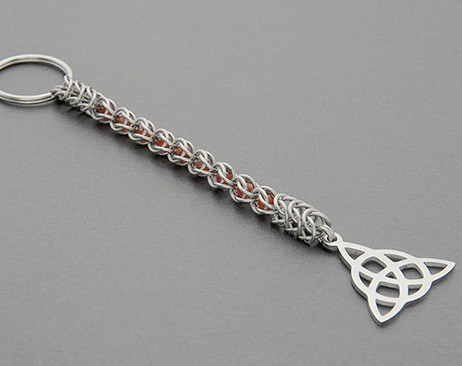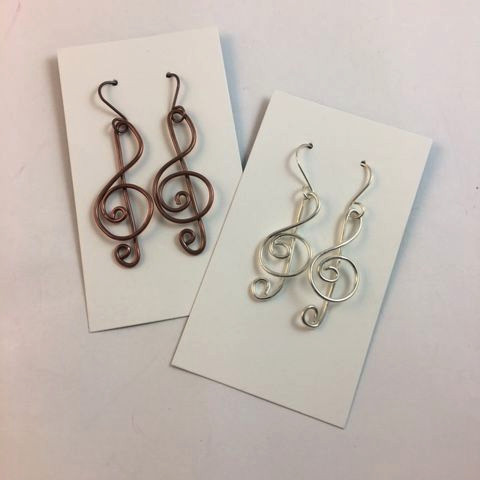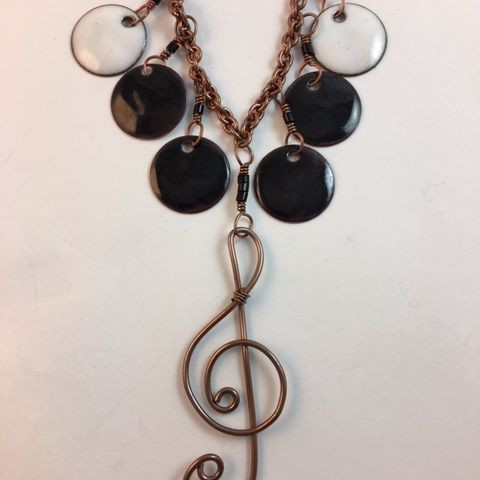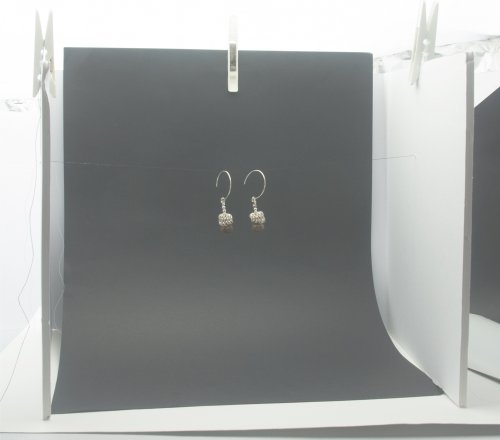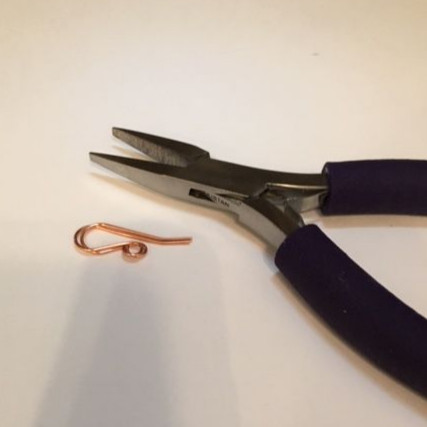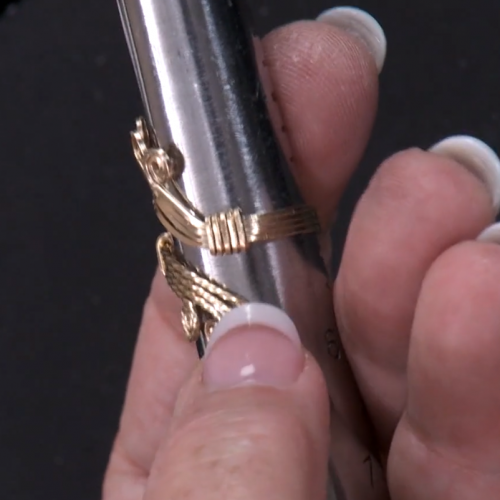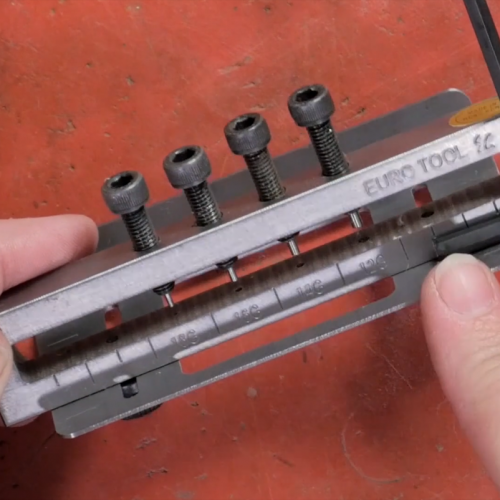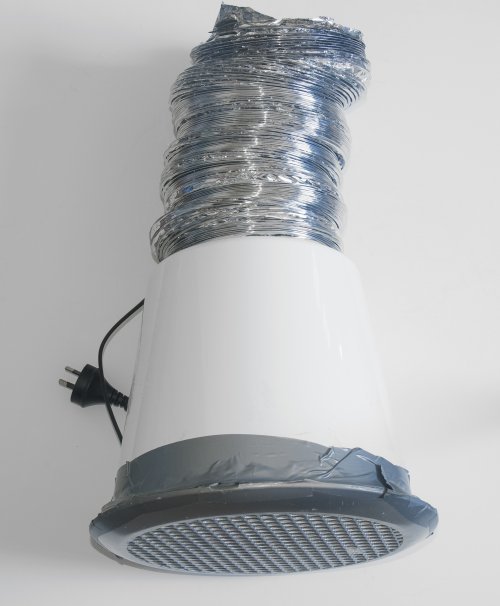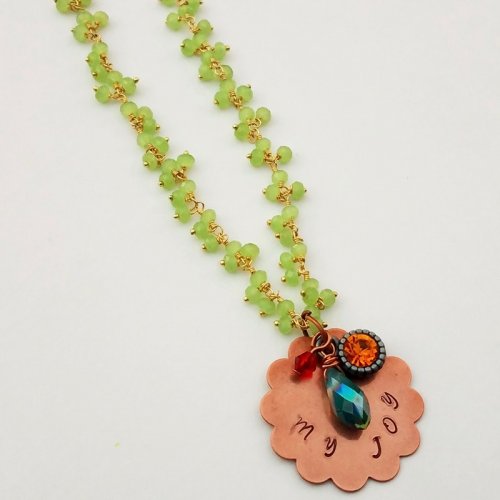All About Silver
By: Mary W. Bailey
When I first got into learning about jewelry making, I quickly found out that there is a huge amount of information one has to learn in order to fully understand the materials we are working with in our jewelry endeavors. One of the first things was silver is just not “silver” and comes with a variety of sub-categories attached to it. Another thing I realized was I needed to do some studying and even find other people who knew and worked with metals who could help me better understand the terminology attached to jewelry making and metal working, so I found and joined the local rock club in my area. Later, I found Dale and added even more knowledge and techniques to my learning base. Never be afraid to ask a question from someone who makes jewelry for a living about materials or techniques.
In this article, silver will be explained, along with its associated sub-categories, so that you can better understand this metal. Cleaning and storing of silver, etc., will be explained in another section on this site.
What is Silver?
Silver is an element, represented with the symbol Ag, the elemental name that Dale always uses when she instructs and you learn very quickly to remember. An “element” is a substance that does not decompose into other chemical elements. Why “Ag”? This symbol comes from the Latin word “argentum”, which means both “silver” and “money”. Believe it or not, this same word is used for silver and money in more than a dozen languages and silver has been used for money for nearly 3,000 years, offering a strong testament to it valued role in world civilization.
Silver has many desirable qualities attached to it. It is highly reflective when polished, reflecting back 95% of light, making it an ideal medium to use in mirrors. This luster makes it a beautiful material for everything ranging from jewelry, to dinnerware, to decorative items, such as frames and vases.
Silver is also very soft and malleable (i.e., easily shaped). It can be rolled into sheets as thin as 1/100,000th of an inch, and has such ductility that it can be formed into a wire finer than human hair. We all know this since we, ourselves, buy sterling silver wire in a variety of gauges as well as shapes (i.e., round and square, dead soft, half-hard). It is because of the malleable property that makes it an excellent element to add with harder substances to produce stronger (less malleable) alloys. Sterling silver is one such alloy. And silver is the best conductor of electrical current and heat making it used even further than just the production of jewelry. Nearly one-half of produced silver is used in industrial applications.
How Silver Is Used (2005) | |||
Industrial Uses: 47% | Photography Uses: 19% | Coins and Medals: 5% | Jewelry/Silverware: 29% |
|
|
|
|
| |||
Silver is much more popular than gold, platinum, and palladium, because it is a bit less of a “precious” metal as opposed to the other fine metals, with the other metals selling anywhere from 50 to 100 times the price of silver. Even with the present precious metal market’s high prices, silver is still much lower than gold, platinum or palladium despite being much higher than it has ever been before.
Where Does Silver Come From?
The chart below represents the top ten silver producing countries based on 2004 data. These 10 nations accounted for 88 percent of the world’s total silver production.
Top Silver Producing Nations (2004) | |||||||||
United States | 6% | Poland | 7% | Mexico | 16% | Other Nations | 12% |
|
|
Canada | 6% | China | 10% | Russia | 6% |
|
| ||
Chile | 7% | Australia | 11% | Kazakstan | 3% |
|
| ||
| |||||||||
If you add up the three nations south of the United States border collectively, you will see that 39 percent of the world’s silver dwarfs the mere 6% produced here within our borders. This shows that one-half of the world’s silver supply comes from the Americas with Europe being represented by Poland, Asia by Russia, Kazakhstan, and China. Australia with 11% rounds out the list and is a major silver source by itself.
Sterling Silver
Don’t be caught up in the misconception that sterling silver is pure (100 percent) silver. This error of understanding has a lot to do with the use of the word “sterling” which from the English language was used to denote “excellence”, such as...”He is a man of sterling qualities”. So what could be more excellent than pure silver? Add to that those people who use the terms “silver” and “sterling silver” interchangeably and suddenly you have an even further confusing term to try and understand.
The term “sterling silver” is a technical term that describes the silver content of an alloy. The phrase “sterling silver” originated in England more than 800 years ago and was used to describe an alloy consisting of 92.5% silver. The remaining 7.5% of the alloy was typically copper, but nickel, zinc and other metals have been used. Take a good look at the edge of our present day quarter and you will see evidence of the other metals being mixed today with silver to replace coins that once were actually sterling silver in a much higher silver base.
One often sees sterling marked not by a percentage, but as the number 925. This means that there are 925 parts per 1000 of silver in the sterling alloy. Silver standards, with sterling at 92.5%, are further divided as follow:
Coin Silver | This is a U.S. standard and is an alloy of 90% silver and 10% copper |
Mexican Silver | This standard is an alloy of 95% silver and 5% other metal(s). Most silver jewelry from Mexico is using the sterling standard |
Britannia Silver | Purer than Mexican Silver, this has no less than 958.4 parts per 1000 silver, and no more than 41.6 parts per 1000 copper. Silver in this quality is marked in the U.K. and Ireland as “958 silver”. |
Fine Silver | In the world of silver, “fine silver” is almost as good as it gets. Fine silver is 999 parts per 1000 of silver. |
Argentium® Sterling Silver
Argentium® sterling silver is a trademarked and patented sterling silver alloy that was created at Middlesex University in England by Professor Peter Johns, a silversmith expert. Professor Johns’ experiments revealed that when a small amount of copper was replaced with the element germanium, the alloy took on highly desirable traits, including the following:
- Resistance to tarnish
- Prevention of firescale, that purple stain that can develop in traditional sterling made with copper.
- Greater malleability and ductility (more easily formed and elongated)
- Easy precipitation (hardening), accomplished even if using a kitchen oven.
- Easily welded and fused, due to its lower melting point.
Okay, so what is germanium? Germanium (Ge) is an element that is similar to tin. It is found on ores, coals and other materials, but never as a free element. Any idea where it was first discovered? Yep, you guessed right, Germany in 1886, hence its name. The addition of germanium changes the way in which the silversmith must work with the alloy.
Silver Plated Jewelry
Plating with silver is usually accomplished by using a process called electroplating. Electroplating can apply a thin silver coat to a jewelry piece composed of inexpensive base metals creating an item that is more economical to produce.
While this process can be used to create beautiful inexpensive jewelry, over time the plating can wear off or become scratched. The extent of the damage depends on the thickness of the plating and the color of the underlying material used to make the item, resulting in whether the damage is only slightly noticeable or is a major one.
The first step in electroplating involves cleaning the item to be used completely of any dirt and grease so that the silver will adhere using a professional cleaning solution. Once clean, the item is then dipped into a solution that contains silver particles in a positive ion form. Then the item is connected to a negatively charged cathode and electricity is applied. A positive electrical terminal is then inserted into the solution. The silver ions are attracted to the metal item and over time they are slowly and evenly deposited onto the item’s surface.
The thickness of the silver coating (plating) is determined by 3 factors:
- The strength of the electrical current;
- The concentration of silver in the dipping solution;
- The length of time the piece is submerged into the solution.
Rhodium Plating
Seen the description “rhodium plated sterling silver” and wondered just what the heck that means? More and more products are popping up offering this type of plating on them and we have to wonder what all the whoopla is about.
Rhodium is related to platinum, occurring naturally in ore deposits. Most rhodium comes from South Africa, but some rhodium is mined in Russia and Canada. This metal is silver-white in color, resistant to tarnish and other forms of corrosion, even acids, and very shiny. And while rhodium is reflective, silver is even shinier.
In the jewelry industry it is primarily used as a protective coating for sterling silver, being applied in a thin layer by electroplating it over the sterling silver to aid in preventing tarnishing and scratches to the surface of the item. By doing so, the effect is that as time goes by, the rhodium plated sterling retains its fresh look longer. Not permanent, this coating will eventually wear off and may need replating depending on the thickness originally applied.
Rhodium plating is not suitable for all types of sterling silver jewelry, especially when one takes into account the important style differences in items that are antiqued or oxidized.
Gold Vermeil
Bet your eyes perked up when you saw “gold vermeil” and we are talking about silver. There’s a good reason for it, so read on. The term “vermeil” (pronounced “ver-mey”) refers to a silver item containing no less that 92.5% silver, that has been plated with a gold or gold alloy that is no less than 10 karat, to a thickness of not less than 2.5 microns.
There are 2 ways of applying gold through electroplating: flash plating and micron plating. With flash plating as little as .25 microns is present. Gold is dipped into an electroplating solution for a short period of time resulting in a method called color plating, as the gold will often wear off in a matter of days or weeks. Micron plating is much better because the thickness of the gold applied is measured. The piece to be plated receives a soaking in a gold plating solution for a long period of time that ensures that an ample coat of gold is applied. Jewelry plated this way will have a thickness of not less than 2.5 microns.







